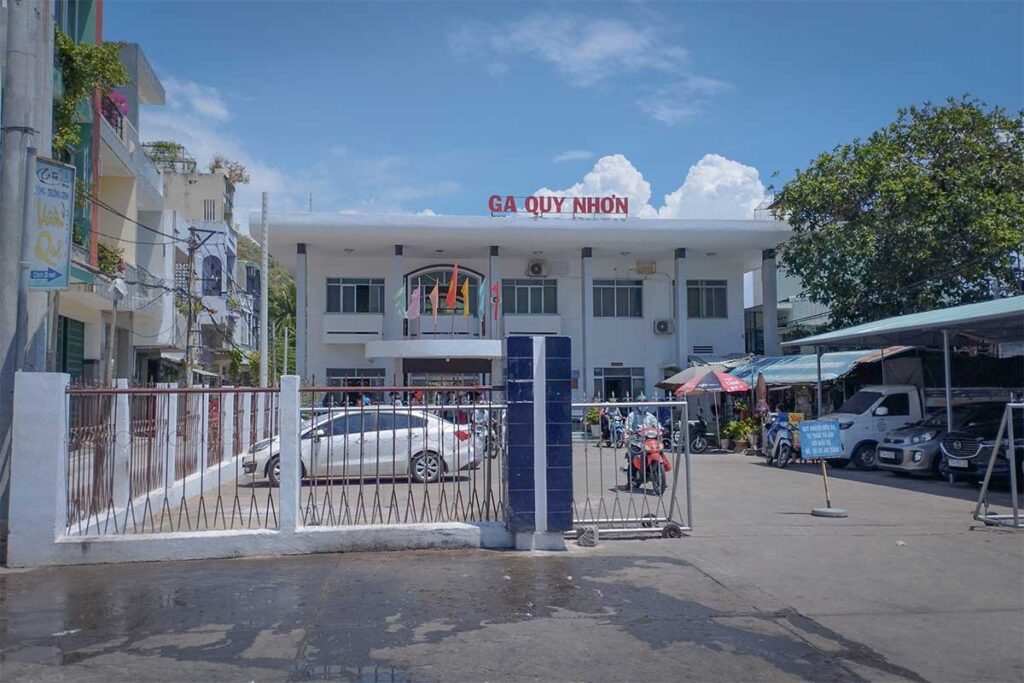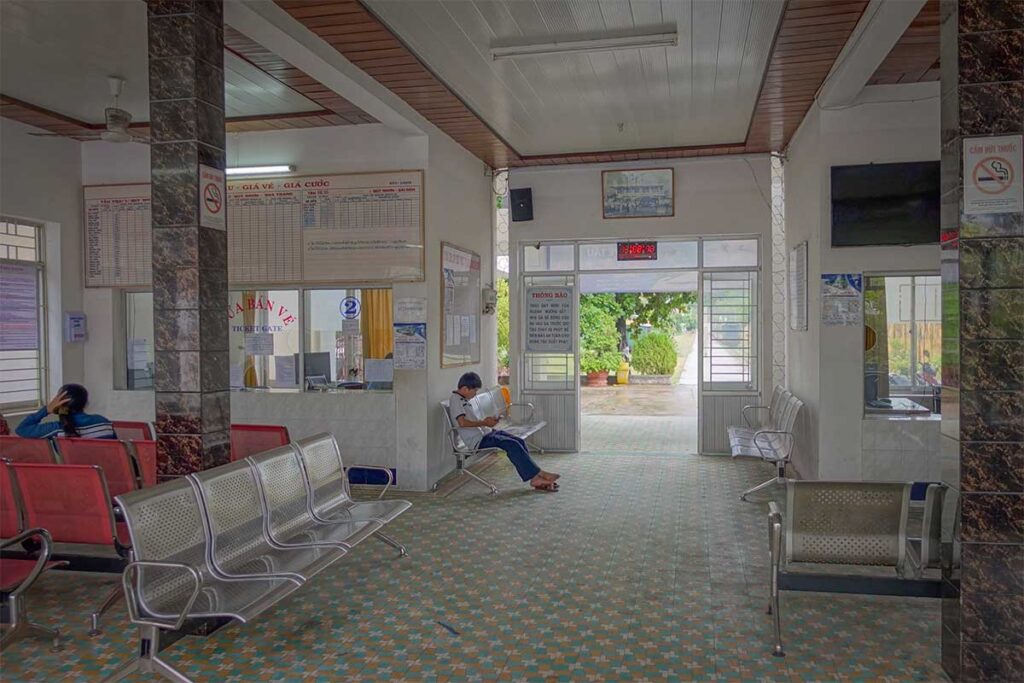Quy Nhon Station vs Diêu Trì Station
If you googled “Quy Nhon Railway Station” because you want to take a train out of Quy Nhon, you’ll almost always use Diêu Trì Station instead. Quy Nhon Station is a small city-terminal on a spur with very limited departures. Diêu Trì is the mainline hub for Da Nang, Hue, Hanoi, Nha Trang, and Ho Chi Minh City.
When Quy Nhon Station actually makes sense
- Your ticket explicitly shows “Quy Nhon (QUY NHON)” as the departure. Rare, but convenient if it exists.
- You’re boarding The Vietage luxury service that uses Quy Nhon access.
- You’re staying right in the center and found a confirmed direct departure from this station.
Otherwise, go to Diêu Trì
- Most north–south trains (Da Nang/Hue/Hanoi and many Saigon services) run from Diêu Trì.
- If your search only returns Diêu Trì (DIEU TRI), that’s your station—Quy Nhon isn’t served on that train.
- You’ll get more departure times and seat/sleeper choices at Diêu Trì.
How to switch your plan in 3 steps
- Search trains to/from “Diêu Trì (DIEU TRI)” instead of Quy Nhon.
- Book the train you want from Diêu Trì.
- Ride Grab/taxi 10–25 minutes from Quy Nhon city to Diêu Trì for your departure (same on arrival, in reverse).
We’ve written a full guide to Diêu Trì Station that explains how to get there, what the facilities are like, and which trains run most often. Check that before planning your journey.
Routes & Trains from Quy Nhon Station
Current status of the spur line
The short rail spur linking Quy Nhon to Diêu Trì has had an on-and-off history. At times in the past, services were suspended, but today the line is still operational — just on a minimal schedule. That means Quy Nhon Station is no longer a busy hub; instead, it serves a handful of departures, mostly southbound.

Direct Quy Nhon ⇄ Saigon
The only real long-distance service from Quy Nhon Station today is the train to Ho Chi Minh City (Saigon). It’s usually one train a day, and it’s not the fast SE service but a slower type that makes frequent stops along the way. Expect around 13–14 hours of travel time. For most travelers, this is less convenient than heading to Diêu Trì and catching one of the multiple SE trains that run daily to Saigon with shorter travel times.
Quy Nhon ⇄ Da Nang/Hanoi
If you’re heading north — to Da Nang, Hue, or Hanoi — you will need to use Diêu Trì Station. Quy Nhon Station simply doesn’t handle these services anymore. Diêu Trì is where you’ll find the SE trains with several departures daily, and it’s the reliable gateway for anyone traveling northbound.
About Quy Nhon Railway Station
Location & setting
Quy Nhon Railway Station is right in the city, on Lê Hồng Phong Street. The entrance is a bit tucked away — you can stand at the nearby roundabout and still not immediately see the station, which often confuses first-time visitors. Its central location is the main advantage: if your train actually departs from here, it’s an easy hop from most city hotels.

Short history
The station was built as a branch terminal connected to the main North–South line at Diêu Trì. It once had more local and long-distance services, but as air travel and buses became dominant, usage dropped sharply. There have been occasional revival attempts, including limited express routes and the introduction of The Vietage luxury train, but in practice, the station has never regained the importance it had decades ago.
Facilities
Expect basic facilities only. There is a small ticket counter, some modest waiting areas with simple seating, and standard restrooms.

A couple of kiosks or street vendors outside the station sell drinks and snacks, but you won’t find restaurants, ATMs, or lounges. This is not a place to plan on spending time — most travelers arrive just before departure.
Atmosphere
The atmosphere is very different from a busy hub like Diêu Trì. The station is quiet, small, and sometimes feels almost deserted, especially outside the departure times of the one or two trains it still handles. That can be pleasant compared to the chaos of larger stations, but it also underlines how limited its role is today.
Accessibility notes
Signage is limited, and the front sign can be hard to spot until you’re close.


Platforms are simple, ground-level crossings without elevators or escalators, so travelers with heavy luggage or mobility issues may need assistance. Like many small stations in Vietnam, facilities for accessibility are minimal.
How to get there
First decide if you really need Quy Nhon Station
Before setting out, double-check your ticket. In most cases, you don’t actually need Quy Nhon Station at all — you’ll be going to Diêu Trì Station instead. Only if your booking specifically lists Quy Nhon (Quy Nhơn) as the departure should you head here.
Address & landmarks
The station is located on Lê Hồng Phong Street, in Quy Nhon city center. The entrance is slightly hidden; even from the nearby roundabout, the station sign isn’t easy to spot. If in doubt, ask a local or set the pin in Grab/Google Maps to avoid confusion.
Taxi/Grab options
If your train does depart from Quy Nhon Station, getting there is easy. A short taxi or Grab ride from most city hotels takes only a few minutes, and the fare is inexpensive by international standards. Unlike Diêu Trì, there’s no significant road transfer involved — so if you’re lucky enough to have a departure from Quy Nhon Station, it’s the most convenient option. For airport transfers, though, you’ll be routed through Quy Nhon city anyway, so most travelers connect via Diêu Trì for their train journeys.



